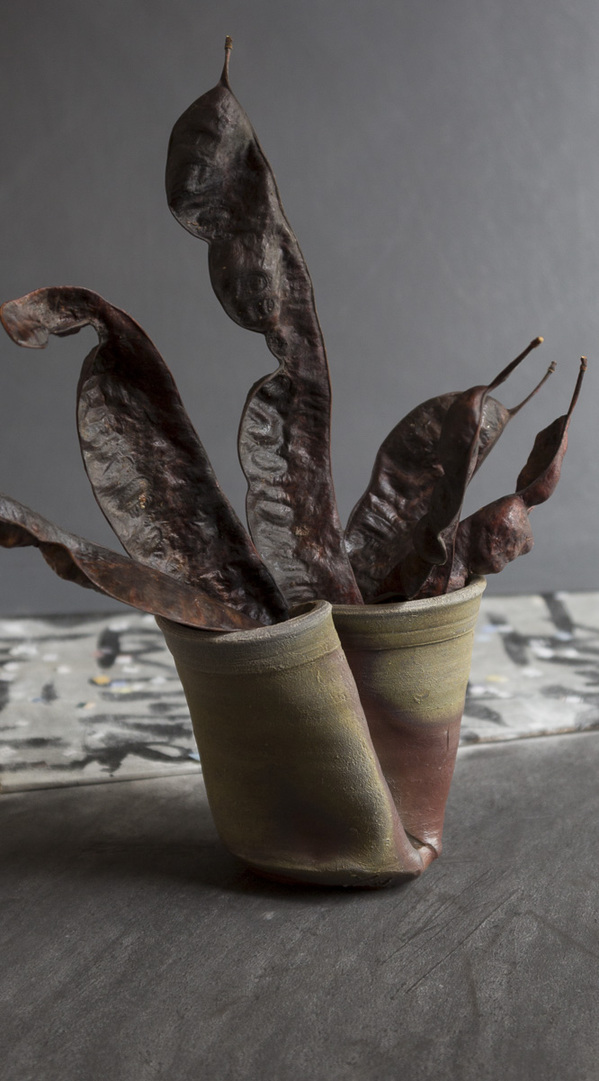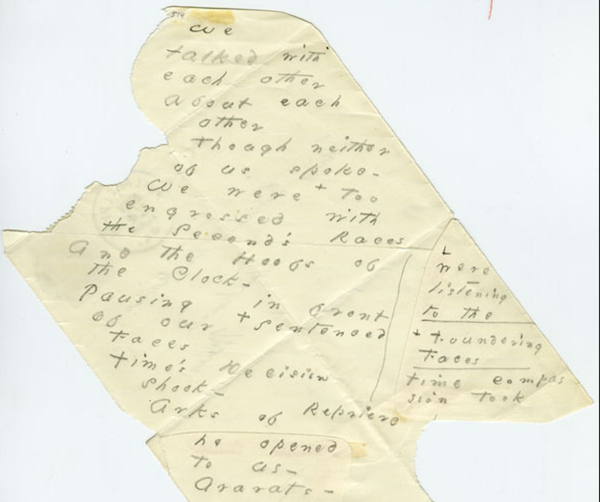Last winter when my siblings and I were in the midst of sorting through my parents' belongings in their New York City loft I took a break and went to the Drawing Center to see Emily Dickinson's envelope poems. In the exhibit there was a small selection of poems written on the backs of gently opened, asymmetrical envelopes. The handwriting was hard to read but I began to see her poems as visual objects sprawled across irregular scraps of sculpturally shaped paper. At the instant of seeing them I was also reading them for meaning and sound. There was a beautiful mix of serendipity in the available space and elements of the accidental exhibited by the organic spacing within these ephemeral paper slips. I returned to my job of sorting, knowing that my mother's illegible handwritten poems had a value I could not discern at that moment. Those moments of sorting followed by encounters with such visual poems has continued to contribute to how I look at text I cannot read. There are the calligraphy practice sheets that I brought home from Korea, the seed pods that remind me of brushstrokes, or even my own writing once I collage it backwards.
 We talked with each other about each other
We talked with each other about each other
Though neither of us spoke --
We were listening to the seconds' Races
And the Hoofs of the Clock --
Pausing in Front of our Palsied Faces
Time compassion took --
Arks of Reprieve he offered to us --
Ararats -- we took --
--Emily Dickinson
and a visual of Emily's original written version:

 We talked with each other about each other
We talked with each other about each otherThough neither of us spoke --
We were listening to the seconds' Races
And the Hoofs of the Clock --
Pausing in Front of our Palsied Faces
Time compassion took --
Arks of Reprieve he offered to us --
Ararats -- we took --
--Emily Dickinson
and a visual of Emily's original written version:

Leave a comment